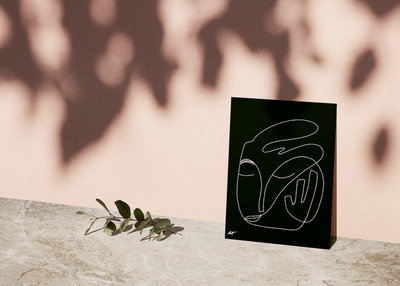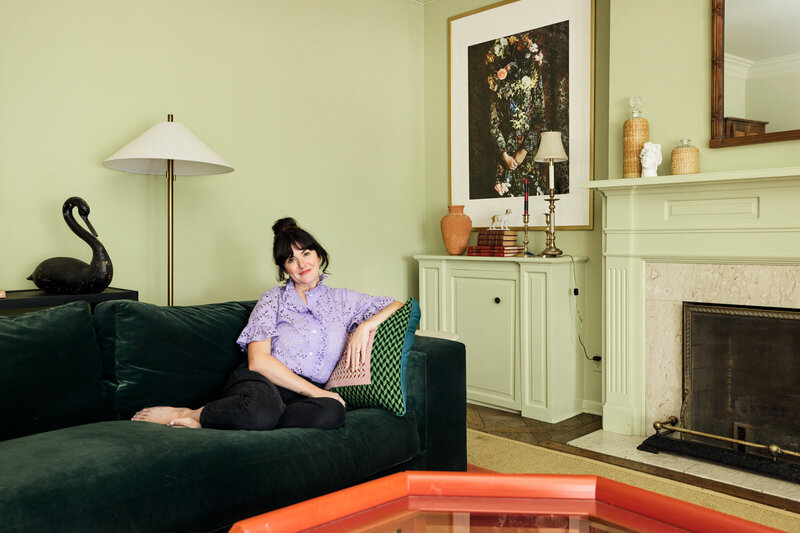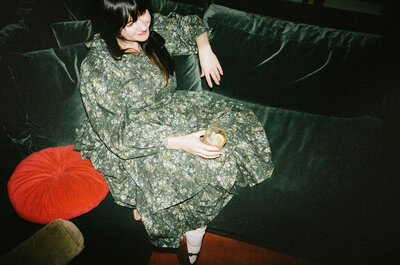

There’s this moment in Romy and Michele’s High School Reunion where I hold my breath. No matter how many times I’ve seen the 90s cult classic, I’m transported to my own awkward teenage manifestation and I hope—nay, YEARN—for the outcome to be different for the twosome. When Romy is caught in her lie by those mean girls, my heart sinks to my stomach. It is almost unwatchable, the shame they feel, the shame we feel seeing ourselves in those characters.
We love redemption stories because they tap into the desperate desire we all sometimes have to transform into anyone but ourselves. To find relief from the often insufferable experience of being in your teens, to find stability and security in your 20s, to find confidence and companionship in your ability to lead and care for your family (and yourself) in your 30s.
As I turned the corner into the second half of my 30s this year, I knew it was time to leave some longstanding narratives of mine in the past. When I would meet new people and tell them the usual stories—where I was from, how I got to Minnesota, how I met Joe, or how I started Wit & Delight, the words came out feeling like a shirt that had grown too small, in a style that no longer made sense.
The past—even the most recent past, like the birth of my kids—feels like a lifetime ago. In the struggle of my postpartum depression and the fight to keep life afloat, I came out on the other side a new version of me.
In some ways, it took me a while to get comfortable in this new existence. Like that of a shaky legged baby cow, there were days I felt unable to do basic tasks. Eating, sleeping, surviving was all I had the energy to do. Yet slowly, even in the times when I felt more disconnected to my past than I do in the present, I’ve been able to find comfort in the discomfort of my evolution. Of the growing pains. Of the last step in letting go of the stories I’ve told myself—stories I needed to stop telling in order to be OK with whatever happened in my teens and twenties, in order to accept what is possible in my future.
When we embrace the discomfort of being fully human, we confront the deepest corners of our mind, where shame thrives. When we shed light on the feelings we deflect, when we move forward into the discomfort of unpacking our wounds and trauma, we find our own freedom.
When we embrace the discomfort of being fully human, we confront the deepest corners of our mind, where shame thrives. When we shed light on the feelings we deflect, when we move forward into the discomfort of unpacking our wounds and trauma, we find our own freedom. In the light of day, all the times we didn’t live up to our potential or disappointed a friend, a family member, a teacher, a boss—we see them for what they are: outdated stories disguised as battle wounds. Soon, we see they aren’t scars to be shown; they’re invisible to everyone but ourselves. When we see those wounds as stories is up to us; it will happen once we’ve processed the trauma, once we’ve worked hard to unwind what put us off course in the first place.
The discomfort of emotional pain is where we can find the freedom to become whoever we want to be.
It’s hard to let go of the people we used to be, but through letting go of the ledge and parting ways with our past, we are able to embrace a new kind of freedom, one that looks only toward what’s possible—one that allows us the capacity to accept new realities and possibilities that were, in past years, invisible to the naked eye.
In what ways have the choices you’ve made contradicted the person you are? Most of us are blessed with the freedom to behave and act in accordance to our own free will. Yet so often we find ourselves believing our thoughts are reality and our opinions are fact, which is why so many of us make ourselves small in the shadowy face of self-judgement.
This month we are exploring the ways personal freedom can be defined, and invite you to think about what it ultimately means to you.
What would life look like if you didn’t believe every thought that passed through your head?
How do your emotions drive what you consume, physically and financially?
In what ways are we holding ourselves accountable to someone else’s idea of who we should be?
How often do you act against your own best interest, or subconsciously, against what you believe?
Our thoughts are not our reality. Our opinions are not fact. Our actions, our words, our choices, however, do shape who we become.
How can we give ourselves permission to be free to pursue the life we want for ourselves and our communities?
As always, you can sign up to receive monthly tech graphics for your phone and computer screen! Sign up for our newsletter to receive this month’s downloadables and have a little Wit & Delight delivered straight to your inbox.


Kate is the founder of Wit & Delight. She is currently learning how to play tennis and is forever testing the boundaries of her creative muscle. Follow her on Instagram at @witanddelight_.
BY Kate Arends - September 1, 2019
Most-read posts:
Did you know W&D now has a resource library of Printable Art, Templates, Freebies, and more?
take me there
Get Our Best W&D Resources
for designing a life well-lived




Thank you for being here. For being open to enjoying life’s simple pleasures and looking inward to understand yourself, your neighbors, and your fellow humans! I’m looking forward to chatting with you.
Hi, I'm Kate. Welcome to my happy place.
















Not having any debt. Period. Not getting into the W & D world of inconspicuous consumption that this blog promotes.
If we are really to be who we want, we run away from reality.
we must always control our thoughts so as not to be consumed.
[…] person. It may be loud. It may be arduous to forget about. However we don’t have to hear it. September’s theme is all about private freedom—letting cross of the proscribing tales we’ve informed ourselves […]